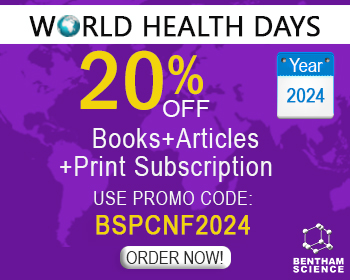Abstract
Diphyllin glycosides (DG) are a type of arylnaphthalene lignans isolated from different plants, and their synthetic derivatives have shown effective antiviral, cytotoxic, hypotensive and diuretic effects at very low concentrations similar to standard drugs that are under clinical use. The biological activities of the DG interfere with signaling pathways of viral infection and cancer induction. The sugar moieties of DG enhance bioavailability and pharmacological activities. The promising results of DG at nanomolar concentrations under in vitro and in vivo conditions should be explored further with clinical trials to determine its toxic effects, pharmacokinetics and pharmacodynamics. This may help identify suitable antiviral and anticancer drugs in the near future. Considering all these activities, the present review is focused on the chemical aspects of DG with a detailed account of the mechanisms of action of DG. An attempt is also made to comment on the status of clinical trials involving DG along with the possible limitations in studies based on available literature till September 2020.
Keywords: Diphyllin glycosides, lignan, cytotoxic, anti-HIV, hypotensive, pharmacological activities.
[http://dx.doi.org/10.1038/s41598-018-38334-4] [PMID: 30742130]
[http://dx.doi.org/10.1016/j.phytochem.2016.02.005] [PMID: 26899361]
[http://dx.doi.org/10.1016/j.jep.2005.05.011] [PMID: 16009521]
[http://dx.doi.org/10.3390/molecules25010183] [PMID: 31906391]
[http://dx.doi.org/10.1039/b910940d] [PMID: 19779640]
[http://dx.doi.org/10.1155/2014/642942]
[http://dx.doi.org/10.1590/S1807-59322009000400015] [PMID: 19488595]
[PMID: 26535033]
[http://dx.doi.org/10.1021/jm9509096] [PMID: 8709099]
[http://dx.doi.org/10.1021/np980136z] [PMID: 9834179]
[http://dx.doi.org/10.1016/S0223-5234(01)01231-4] [PMID: 11461764]
[http://dx.doi.org/10.1055/s-2006-961473] [PMID: 1332091]
[http://dx.doi.org/10.1007/s11101-020-09668-7]
[http://dx.doi.org/10.1055/s-2006-960110] [PMID: 1663632]
[http://dx.doi.org/10.3390/molecules24050917] [PMID: 30845651]
[http://dx.doi.org/10.4103/0974-2700.96486] [PMID: 22787347]
[http://dx.doi.org/10.1152/physrev.00035.2015] [PMID: 27335445]
[http://dx.doi.org/10.1038/s41598-017-18944-0] [PMID: 29323210]
[http://dx.doi.org/10.1016/j.tetlet.2013.12.014]
[http://dx.doi.org/10.1021/np5002785] [PMID: 24937209]
[http://dx.doi.org/10.1021/np050028u] [PMID: 15921419]
[http://dx.doi.org/10.1248/cpb.54.1223] [PMID: 16880677]
[http://dx.doi.org/10.1359/jbmr.070613] [PMID: 17576165]
[http://dx.doi.org/10.1021/cen-v078n046.p029]
[http://dx.doi.org/10.1016/j.ejmech.2014.06.002] [PMID: 24929344]
[http://dx.doi.org/10.2174/1389557516666160614005828] [PMID: 27297675]
[http://dx.doi.org/10.1080/14786419.2018.1474467] [PMID: 29768037]
[http://dx.doi.org/10.3389/fphar.2020.00037] [PMID: 32116713]
[http://dx.doi.org/10.1016/0031-9422(96)00024-6] [PMID: 8768323]
[PMID: 10608617]
[http://dx.doi.org/10.1016/j.jtcme.2015.08.004] [PMID: 27774423]
[http://dx.doi.org/10.1055/s-2005-873141] [PMID: 16450297]
[http://dx.doi.org/10.4103/0975-1483.96616] [PMID: 22754257]
[http://dx.doi.org/10.4103/0973-1296.96559] [PMID: 22701286]
[http://dx.doi.org/10.4103/0253-7613.93848] [PMID: 22529475]
[http://dx.doi.org/10.4103/0976-0105.141950] [PMID: 25316991]
[http://dx.doi.org/10.1016/j.phytochem.2017.01.005] [PMID: 28110956]
[http://dx.doi.org/10.1021/acs.jnatprod.7b00004] [PMID: 28613071]
[http://dx.doi.org/10.1248/cpb.50.844] [PMID: 12045345]
[http://dx.doi.org/10.1021/np501020m] [PMID: 26091020]
[http://dx.doi.org/10.1021/bk-1998-0697.ch001]
[http://dx.doi.org/10.1007/s10086-007-0892-x]
[http://dx.doi.org/10.3390/molecules23123385] [PMID: 30572693]
[http://dx.doi.org/10.3390/molecules21070820] [PMID: 27347906]
[http://dx.doi.org/10.1021/ol501853y] [PMID: 25061845]
[http://dx.doi.org/10.1002/ardp.201200035] [PMID: 22592997]
[http://dx.doi.org/10.1002/cjoc.200790127]
[http://dx.doi.org/10.1111/resp.13196] [PMID: 29052924]
[http://dx.doi.org/10.1128/CMR.00102-15] [PMID: 27281742]
[http://dx.doi.org/10.3389/fphar.2019.01207] [PMID: 31787892]
[http://dx.doi.org/10.1007/s13346-019-00691-6] [PMID: 31788762]
[http://dx.doi.org/10.1101/cshperspect.a006098] [PMID: 25833940]
[http://dx.doi.org/10.1016/j.ebiom.2019.08.060] [PMID: 31501074]
[http://dx.doi.org/10.1093/jac/dki464] [PMID: 16431862]
[http://dx.doi.org/10.1517/14740338.4.2.201] [PMID: 15794714]
[http://dx.doi.org/10.12688/f1000research.19694.1]
[http://dx.doi.org/10.1002/prp2.293] [PMID: 28596841]
[http://dx.doi.org/10.1128/AAC.00411-17] [PMID: 28348160]
[http://dx.doi.org/10.1016/j.etap.2011.04.006] [PMID: 21843795]
[http://dx.doi.org/10.3322/caac.21590] [PMID: 31912902]
[http://dx.doi.org/10.1016/j.biopha.2017.10.116] [PMID: 29101806]
[http://dx.doi.org/10.1016/S1535-6108(03)00216-2] [PMID: 14522250]
[http://dx.doi.org/10.1016/j.phytochem.2009.05.016] [PMID: 19559451]
[http://dx.doi.org/10.1186/s11671-018-2716-x] [PMID: 30328537]
[http://dx.doi.org/10.1038/s41598-019-45641-x] [PMID: 31235856]
[http://dx.doi.org/10.3892/ol.2017.6917] [PMID: 29113270]
[PMID: 30675278]
[http://dx.doi.org/10.1016/j.ejmech.2011.11.011] [PMID: 22119124]
[http://dx.doi.org/10.3389/fphar.2020.00408] [PMID: 32322202]
[http://dx.doi.org/10.1158/1535-7163.MCT-13-0791] [PMID: 24435445]
[http://dx.doi.org/10.1038/ncomms8007] [PMID: 25959678]
[http://dx.doi.org/10.1247/csf.23.33] [PMID: 9639028]
[http://dx.doi.org/10.1146/annurev.cellbio.17.1.463] [PMID: 11687497]
[http://dx.doi.org/10.3892/ol.2017.6924] [PMID: 29113219]
[http://dx.doi.org/10.1186/s12885-017-3418-y] [PMID: 28633655]
[http://dx.doi.org/10.1038/cddiscovery.2017.36] [PMID: 28811933]
[http://dx.doi.org/10.1111/j.1365-2796.2010.02266.x] [PMID: 20964733]
[http://dx.doi.org/10.1038/aps.2013.5] [PMID: 23524572]
[http://dx.doi.org/10.2174/156800913804486638] [PMID: 22414011]
[http://dx.doi.org/10.1158/0008-5472.CAN-12-2464] [PMID: 23288916]
[http://dx.doi.org/10.20892/j.issn.2095-3941.2017.0033] [PMID: 29372101]
[http://dx.doi.org/10.1158/1078-0432.CCR-040020]
[http://dx.doi.org/10.1146/annurev.biophys.30.1.397] [PMID: 11441808]
[http://dx.doi.org/10.1016/0896-6273(88)90124-9] [PMID: 3078414]
[http://dx.doi.org/10.1007/s00018-005-5330-x] [PMID: 16314924]
[http://dx.doi.org/10.1007/978-3-319-57127-0_5] [PMID: 28600784]
[http://dx.doi.org/10.1038/sj.onc.1207233] [PMID: 14663486]
[http://dx.doi.org/10.1038/nrd3253] [PMID: 20885410]
[http://dx.doi.org/10.1172/JCI73937] [PMID: 25654545]
[http://dx.doi.org/10.2174/1389202917666160808125213] [PMID: 28503091]
[http://dx.doi.org/10.1038/nrc2607] [PMID: 19377506]
[http://dx.doi.org/10.1021/cb300648v] [PMID: 23259582]
[http://dx.doi.org/10.1016/S0065-7743(08)61134-3]
[http://dx.doi.org/10.1007/s00421-014-2823-z] [PMID: 24463603]
[http://dx.doi.org/10.1093/ajh/3.8.645] [PMID: 2222958]
[http://dx.doi.org/10.1080/08037051.2016.1179508] [PMID: 27146368]
[http://dx.doi.org/10.1016/S0140-6736(17)32366-8] [PMID: 28919119]
[http://dx.doi.org/10.1586/erc.10.27] [PMID: 20528637]
[http://dx.doi.org/10.4103/0973-1296.84239] [PMID: 21969796]
[http://dx.doi.org/10.1081/CLT-120022005] [PMID: 12870879]
[PMID: 28884079]
[http://dx.doi.org/10.1016/S0140-6736(77)91530-6] [PMID: 69974]
[http://dx.doi.org/10.2174/1381612003398582] [PMID: 11102564]
[http://dx.doi.org/10.1023/A:1006293830585] [PMID: 10426664]
[http://dx.doi.org/10.1248/bpb.25.783] [PMID: 12081147]
[PMID: 8665518]
[http://dx.doi.org/10.1016/j.toxrep.2014.08.006] [PMID: 28962273]
[PMID: 8517913]
[http://dx.doi.org/10.3389/fchem.2019.00253]
[http://dx.doi.org/10.1200/JCO.1996.14.7.2020] [PMID: 8683232]
[http://dx.doi.org/10.1007/s002800050524] [PMID: 8823496]




























